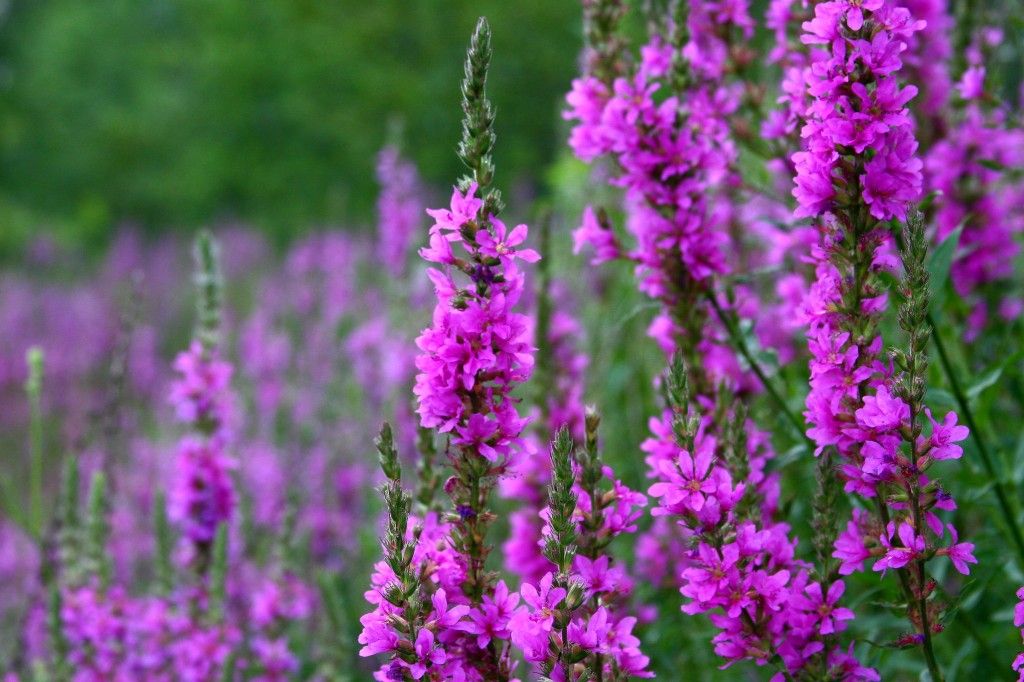Purple Loosestrife clogs wetlands and waterways, choking out other plants and eliminating food sources for native wildlife. The plant is classified as a federal noxious weed.
Lythrum, which is the botanical name of the genus. It is native to Europe but does not cause the same type of damage there because European bugs, such as root weevils and leaf eating beetles, control its growth. It is risky, however, to introduce such creatures to our country in the hopes of controlling this pest of a plant, which can produce over 2.5 million seeds per plant in this country. Worse still, its seeds can live up to 20 years and still be viable to sprout!
The whole botanical name is Lythrum salicaria, and Charles Darwin reportedly loved the pretty flowers on the plant, which shows that even geniuses can be conned by good looks. European settlers also liked its looks and brought it to America where it quickly became well established.
For most of the 20th century, it was highly recommended to gardeners for areas with poor drainage. Its beguiling vigorous habit and gorgeous purple, (There is also a white variety.), flowering spires made it popular. But by the 1980s, its aggressive habit made some horticulturalists start referring to it as a “handsome rascal.” Don’t ever plant it!
This is Moya Andrews, and today we focused on purple loosestrife.










